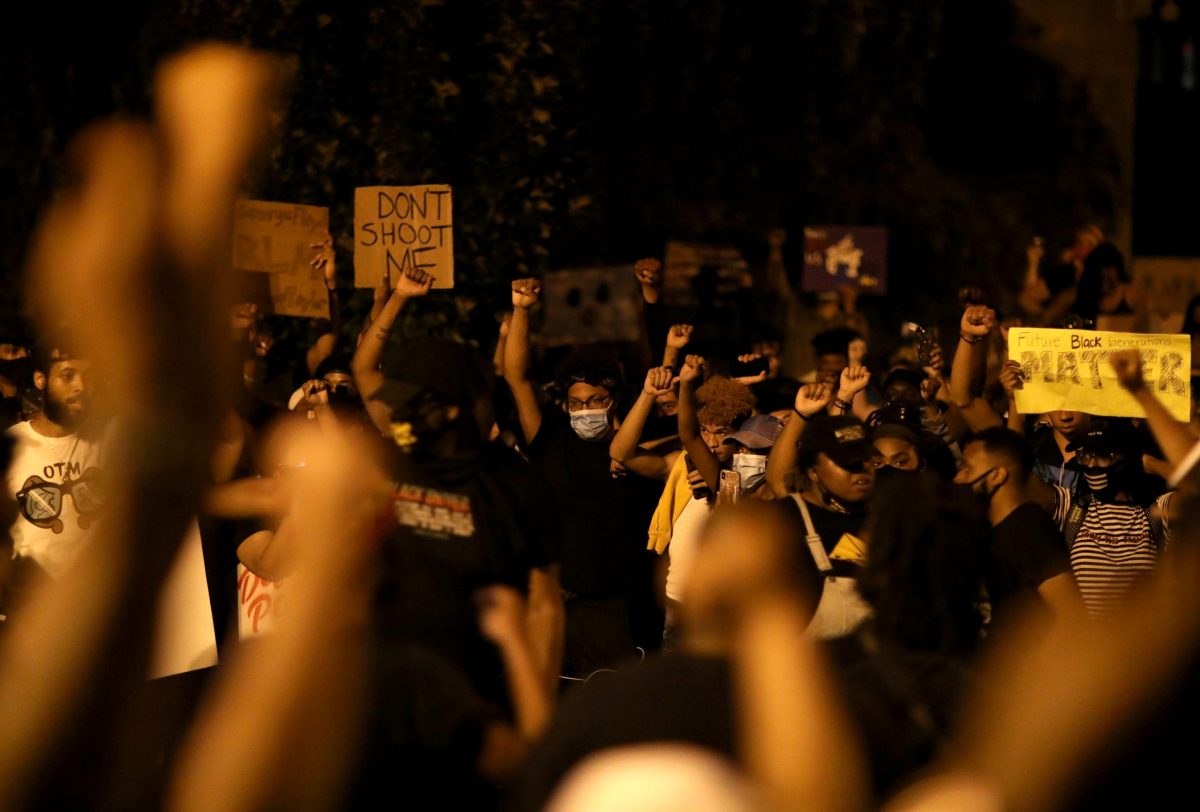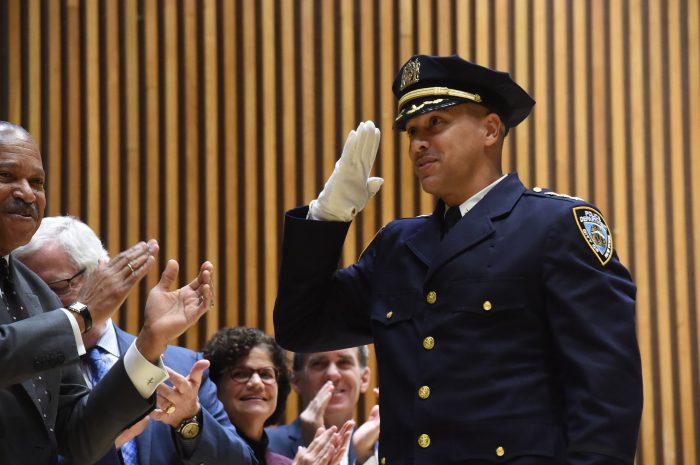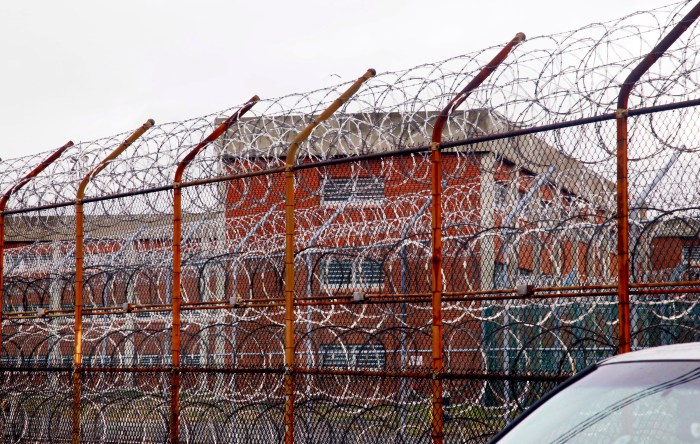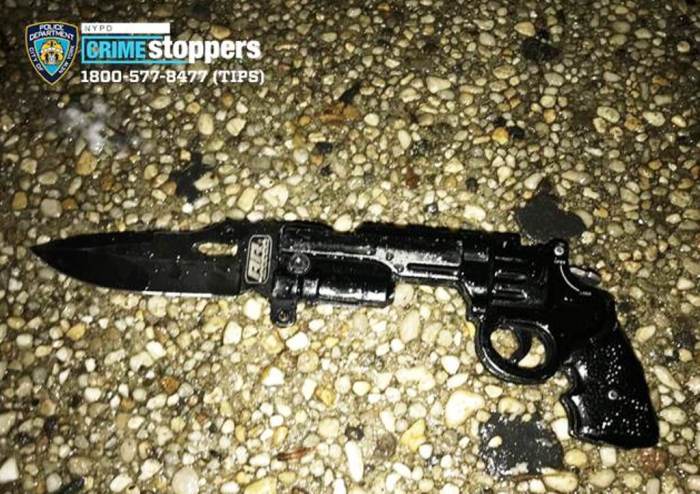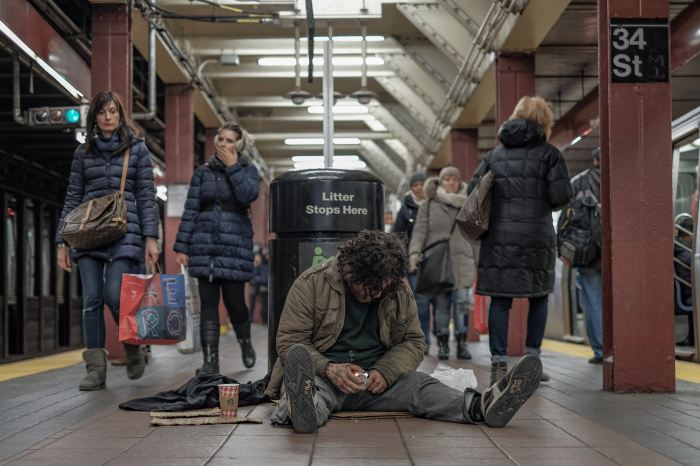The long-awaited report from the city’s Department of Investigation analyzing the New York Police Department’s handling of the George Floyd protests calls for sweeping reforms in the department.
The over 100-page-long report fleshes out a series of deficiencies found in the NYPD’s response to the protests which investigators found “undermine public confidence” in the agency’s ability to protect people’s right to protest peacefully.
Protests erupted across the country after Minneapolis-man George Floyd died after being pinned to the ground by a white officer’s knee. In New York City, thousands of demonstrators took to the streets in late May and June at first calling for the officers involved in Floyd’s arrest and death to be properly tried in a court of law and later for general police reform.
The demonstrations quickly became defined by the constant clashes between protesters and police officers who frequently hit, shoved and pepper-sprayed peaceful marchers without provocation.
“I want to say from the beginning, I read this report and I agree with it,” said Mayor Bill de Blasio during in a video posted online shortly after the DOI reporter was released Friday morning. “ We have to do better, I have to do better, our police department has to do better.” De Blasio went on to say that the majority of officers did their job correctly and only a some individual police officers did something wrong.
“That’s not acceptable and there has to be discipline,” he said. De Blasio added that he agreed with some parts of the report more than others.
During the protests, De Blasio was heavily criticized by New Yorkers for frequently siding with the police during demonstrations and commending officers on multiple occasions for showing “tremendous restraint” with some calling for his resignation along with Police Commissioner Dermot Shea.
In the report, investigators found the NYPD lacked a clearly defined strategy to respond to protests, the crowd control tactics used by officers such as baton hitting, mass arrests, pepper spray and kettling all “heightened tensions” during protests and that some policing decisions were made based intelligence gathered by officers that did not adequately take “context or proportionality” into account.
An example listed in the report of one such decision was during a Mott Haven protest in June where a crowd of 250 protesters, legal observers, medics and reporters were kettled, beaten and pepper-sprayed resulting in roughly 100 arrests. Commissioner Shea later justified the officer’s actions by claiming the agency had seen posters hung up across the South Bronx neighborhood claiming that protesters planned to burn things down and “cause mayhem” followed by a claim that officers had intercepted a plan from agitators to cause chaos.
In reality, officers planned the mass arrest in the neighborhood, according to a report released by the Human Rights Watch, which also called the incident one of the most aggressive police responses to a George Floyd protest that summer.
In addition, the report found the NYPD deployed officers who lacked “sufficient or sufficiently recent training on police protests, the agency lacked a centralized community affairs strategy for the protests and it lacks a proper means to collect protest-related data.
“ My main message is that I hope he takes the findings seriously and embrace the recommendations,” said Commissioner Margaret Garnett during a virtual press conference on Friday. Mayor de Blasio said during a weekly interview with WNYC that there are plans to reform the NYPD in upcoming year but did specify what in the department would change.
The report includes a 20-point list of recommendations for the department to improve its protest policing policies which are as follows:
-
NYPD should draft a Patrol Guide policy specific to policing protests and protected First Amendment activity. NYPD should consult on this policy with individuals and entities outside of the Department, including civil rights attorneys, community organizations, and police reform experts.
-
NYPD should create a new Protest Response Unit, that does not report to Strategic Response Group, to lead the planning and strategy for response to large protests, to collaborate with the Community Affairs Bureau on community engagement, and to coordinate with other divisions, borough commands, and precincts on response.
-
NYPD should reevaluate the central role of the Strategic Response Group and Disorder Control Unit in response to large protests given their orientation to handle counterterrorism, riots, and other serious threats, and better calibrate their use to circumstances that require such specialized force.
-
NYPD should create internal written records explaining the reasons and documenting authorization for deployment of the Strategic Response Group, Disorder Control Unit, and other specialized units for disorder control purposes at protests.
-
To the extent NYPD deems the assignment of specialized units or officers in “riot gear” or “hard uniforms” potentially necessary to a protest response, it should stage those officers in nearby areas not visible to protesters for deployment only if necessary.
-
NYPD should develop a written policy outlining reasonable limitations on the use of disorder control tactics, such as encirclement and mass arrests, specific to their use at First Amendment-protected protests.
-
Through both training and policies, NYPD should expand incorporation of differentiation methods into their protest policing to reduce reliance on indiscriminate enforcement approaches that fail to distinguish between those engaged in peaceful First Amendment activity and those engaged in violence or property destruction.
-
NYPD should employ standardized daily messages or instructions for use by commanders and supervisors during roll calls or briefings involving officers responding to protests, including guidance about the constitutional rights of protesters and the objectives of the response.
-
NYPD should play any LRAD dispersal orders or warnings at least three times from multiple locations at large protests and events, unless emergency circumstances do not permit.
-
NYPD should audio or video record LRAD dispersal orders or warnings when made at protests both from a location near the device and, if practicable, a location near protesters at the furthest distance from the device.
-
NYPD should consider expansion of instruction on de-escalation and crowd psychology in training relating to policing protests.
-
NYPD should involve the Community Affairs Bureau in the development and presentation of training related to policing protests.
-
NYPD should consult with community organizations and issue- advocacy groups on the content of protest policing training and consider inviting civilians with relevant experience organizing protests or other First Amendment events to participate in such training.
-
NYPD should complete the deployment of its new training to officers as soon as possible to ensure that officers deployed to police protests have received recent and consistent training.
-
NYPD should ensure that the Chief of the Community Affairs Bureau is involved in discussions and decisions regarding the planning and strategy for policing large protests.
-
NYPD should formalize the use of Community Affairs Bureau officers and individual precinct Community Affairs officers in response to large-scale protests.
-
NYPD should require that the use of Community Affairs officers during protests be solely in a community affairs capacity and separate them from any patrol or enforcement functions, unless their alternative use is necessary due to an emergency, absence of other available personnel when immediate public safety or officer safety needs arise, or other compelling reasons.
-
NYPD should enhance and expand its public communication during protests, including additional use of social media; such communications should balance concerns about the First Amendment rights of protesters, officer and public safety, and police-community relations.
-
NYPD should establish data collection procedures to reliably track complete, relevant protest data, including but not limited to arrest data. These procedures may include mechanisms for officers to designate arrests as relating to protest activity and enter such information into NYPD databases accordingly.
-
To promote transparency around NYPD policing of protests, NYPD should report to the public regarding its responses to these recommendations and any additional changes or plans relating to policing of future protests within 90 days.
Jacob Kaye contributed to this article.



